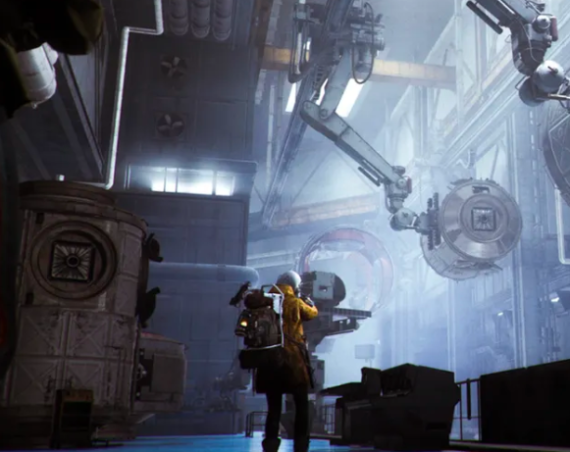
2XKO Review: Reflecting on Riot’s League of Legends Fighting Game After 14 Years
Since its debut in 2009, League of Legends has transcended being merely a game, evolving into a cultural phenomenon that has reshaped multiplayer online battle arenas (MOBAs) and competitive gaming worldwide. I’ve been a dedicated player since the summer of 2011, witnessing milestones from Faker’s rise to the acclaimed Arcane series, and the ongoing hopeful whispers about the never-released LoL MMO. Yet, with the emergence of Riot’s fighting game, 2XKO, expectations and excitement among fans including myself have been mixed.
Initial Impressions of 2XKO: Stepping Into the Arena
Approaching the early access release of 2XKO, I lowered my expectations due to my limited fighting game experience, predominantly centered on the Injustice series. My hope was not immediate mastery but rather an engaging experience that would sustain interest beyond the novelty phase. With Riot’s powerful League of Legends branding, capturing attention was assured, but my question was whether 2XKO could nurture a deeper, lasting investment.
- Tutorial and early matches: Although initially overwhelmed by the tutorial’s depth, I secured a 2-1 record in placement matches using a brute force strategy—focusing on Juggernaut trait champion Ahri without utilizing the tag mechanic extensively.
- Character challenge: Opting for Teemo as my free unlock, inspired by the character’s appealing reveal trailer, proved disheartening. His kit struggles noticeably against bigger, aggressive champions like Darius and Yasuo, highlighting the steep learning curve and balance challenges 2XKO faces.
- Community competition: The social hub’s arcade-style matchmaking lacked sophistication, often pitting me against highly seasoned players resulting in lopsided matches. This contrasted with AI combatants, which I could easily defeat yet provided little true skill advancement.
- Advanced tutorials: The challenge presented by complex input combos created a barrier to skill progression, which combined with tough multiplayer battles, led to a frustrating experience for newcomers.
The Reality of 2XKO in the Current Fighting Game Landscape
Understanding Riot’s motivation for creating 2XKO helps contextualize the game’s direction. Riot, as a company rooted in competition, naturally extends its portfolio from MOBAs to shooters like Valorant, which has gained significant competitive credibility since its 2020 launch. There is potential for 2XKO’s extensive roster, drawn from League of Legends champions, to flourish if it can engage and maintain a dedicated fighting game community.
However, compared to titans of the fighting game genre such as Street Fighter and Tekken, 2XKO’s current incarnation feels less polished and accessible, with early user reports pointing to balance and matchmaking issues. The competitive fighting game community values nuanced mechanics, fair matchmaking, and deep character mastery, all areas where 2XKO is still evolving.
Looking Back: Riot Forge and the Indie Game Legacy
Riot’s experimentation isn’t limited to multiplayer titles alone. Through Riot Forge, the publisher backed several critically acclaimed indie games before the label’s closure in 2024. Titles like Ruined King and Hextech Mayhem offered richer single-player or RPG experiences that resonated differently with the fanbase, especially for players who might find traditional competitive scenes challenging or less appealing.
Riot Forge’s cult favorites demonstrated the studio’s capability to diversify while leveraging League of Legends’ lore and universe, opening doors to broader gaming experiences. Their discontinuation represents a notable shift away from supporting diverse gaming audiences within Riot’s ecosystem.
Key Takeaways on 2XKO and Riot’s Future Directions
- Long-term potential: 2XKO’s success hinges on refining gameplay mechanics, balancing its roster, and developing robust matchmaking systems to foster competitive fairness and accessibility.
- Diverse audience engagement: Riot’s previous RPG and indie ventures via Riot Forge highlight the importance of offering varied gaming experiences beyond pure competition, appealing to a wider spectrum of players.
- Community building: Establishing a passionate fighting game community requires more than brand recognition—it demands continual updates, player support, and clear developer communication.
Conclusion
After nearly 14 years as a League of Legends enthusiast, the arrival of 2XKO sparks reflection on Riot’s evolving creative priorities. While 2XKO currently offers a fighting game experience that may not yet captivate all fans, its existence is a testament to Riot’s ambition to innovate within competitive genres. For many, the charm of previous Riot Forge productions remains a benchmark of what expanded, lore-rich, and accessible gaming experiences can achieve.
The fighting game genre is challenging to master and develop for, especially when balancing depth and accessibility. 2XKO’s journey from early access to a potential staple in the scene will be an essential story to watch, as it could redefine Riot’s relationship with its vast player base and multiply competitive offerings.
Sources:


